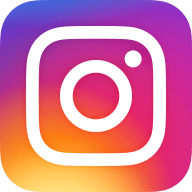You are standing on the edge of a rabbit hole. You look down and see a maze of twisty little passages, all alike. Run away Y/N?
Some additions to what
Uuglypher has said:
When you open a raw file in your chosen editor, it will look rather flat compared to a straight-out-of-camera JPEG. It'll take a little practice to learn to tune the raw file to produce something that looks as good as the standard JPEG. And then it will take a little more practice to learn to take advantage of the extra range the raw file can give you and potentially produce something better than the standard JPEG.
And along with the greater color depth and dynamic range that
Uuglypher mentioned, a raw file leaves it up to you to decide how much sharpening and noise reduction to apply to the file. Some people feel that out-of-camera JPEGs are oversharpened (giving a crunchy look and sometimes showing artifacts). And some feel that the camera processing is too heavy-handed in applying noise reduction, causing the image to lose detail. In "developing" a raw image, you make those decisions about sharpening and noise reduction yourself, so you can suit them to the individual image and to your intent.
You also need to alter your exposure technique to get the most out of raw captures. As
Uuglypher said, the preview on the screen that most (or maybe all) camera apps show you as you frame up your shot is based on a JPEG rendering. But the raw file has greater range on the highlight end than the JPEG rendering does, so if you adjust your exposure to avoid highlight clipping based on what you see on the screen, you're not taking advantage of that extra range. (And if you do adjust your exposure for the raw file's extra range, then the JPEG that gets saved along with the raw will be overexposed.)
There's a $15 ebook titled
Ultimate iPhone DNG that goes into much more detail about how to get the most out of raw shooting on an iPhone. It's three years old now, but I think everything still applies. (If you do a search in MT on the title, you'll find some comments from
FundyBrian on it.)
Continue down rabbit hole Y/N?

googlethatforyou.com


 . I suspect from the contents that it will be directed at beginners like his book. No mention of RAW so can’t see myself forking out $197 for this ‘Masterclass’. I think Brad’s photography much better anyway.
. I suspect from the contents that it will be directed at beginners like his book. No mention of RAW so can’t see myself forking out $197 for this ‘Masterclass’. I think Brad’s photography much better anyway.

 . Secondly, you can’t see the name and exif of the image without using another app and you can’t change the name of an image. They have a numeric numbering system. It starts renumbering the images img0001 once it hits img9999 which caused all sorts of backup problems until the app developers cYou also cannot tag photos with the app although it’s quite clever at allowing you to search items like ‘bird’ for example. The iPhone recently introduced a Folder system which is making moving and saving docs and images much easier but it’s not quite there yet.
. Secondly, you can’t see the name and exif of the image without using another app and you can’t change the name of an image. They have a numeric numbering system. It starts renumbering the images img0001 once it hits img9999 which caused all sorts of backup problems until the app developers cYou also cannot tag photos with the app although it’s quite clever at allowing you to search items like ‘bird’ for example. The iPhone recently introduced a Folder system which is making moving and saving docs and images much easier but it’s not quite there yet. I rarely use the mini anymore but even at the height of my mini madness I hardly ever stored many photos on there.
I rarely use the mini anymore but even at the height of my mini madness I hardly ever stored many photos on there.


